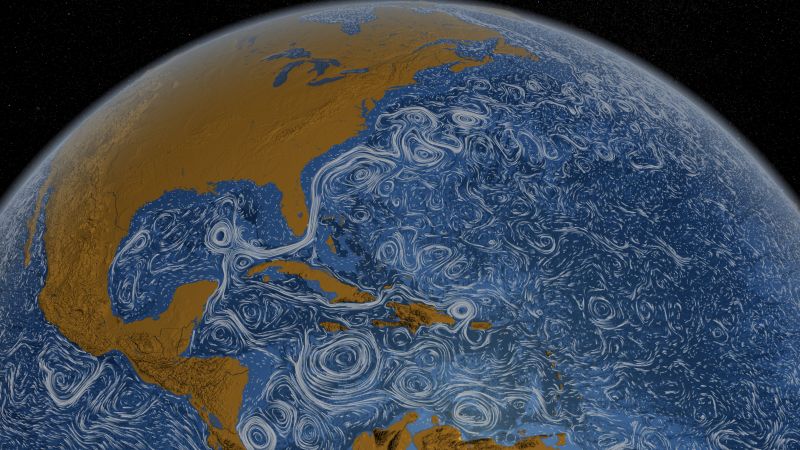RSS feed source: National Science Foundation
A new study supported by the U.S. National Science Foundation shows, for the first time, how heat moves — or rather, doesn’t — between materials in a high-energy-density plasma state. The work is expected to provide a better understanding of inertial confinement fusion experiments, which aim to reliably achieve fusion ignition on Earth using lasers. How heat flows between a hot plasma and a material’s surface is also important in other technologies, including semiconductor etching and vehicles that fly at hypersonic speeds.
High-energy-density plasmas are produced only at extreme pressures and temperatures. The study shows that interfacial thermal resistance, a phenomenon known to impede heat transfer in less extreme conditions, also prevents heat flow between different materials in a dense, super-hot plasma state. The research is published in Nature Communications and was led by Thomas White, a physicist at the University of Nevada, Reno, and his former doctoral student, Cameron Allen. White is a recipient of an NSF Faculty Early Career Development grant.
“Understanding how energy flows across a boundary is a fundamental question, and this work provides us with new insights into how this happens in the exceptionally energy-dense environments that one finds inside of stars and planetary cores,” says Jeremiah Williams, a program director for the NSF Plasma Physics program.
RSS feed source: National Science Foundation
“Today, I am announcing my decision to step down as Director of the U.S. National Science Foundation (NSF), effective today. It has been an honor and privilege to serve as the Director of NSF for the last five years. I believe I have done all I can to advance the critical mission of the agency and feel that it is time for me to pass the baton to new leadership.
I came to NSF inspired by its mission, with a desire to serve the scientific community alongside the exceptional people of the agency. This has motivated me every day over the last five years. I have always believed that innovation and opportunities must be unleashed everywhere at speed and scale, thereby nurturing talent in every corner of our great nation. This will ensure we remain competitive and innovative on a global scale.
This is a pivotal moment for our nation in terms of global competitiveness. NSF is an extremely important investment to make U.S. scientific dominance a reality. We must not lose our competitive edge.
I am deeply grateful to both Presidents for the opportunity to serve our nation. I am also thankful for the strong bipartisan support of Congress and the tireless efforts of the amazing staff at NSF. I wish the very best for the agency and will always look proudly at the
Click this link to continue reading the article on the source website.
RSS feed source: National Science Foundation
U.S. National Science Foundation-supported researchers published a new paper that explains how atmospheric wind affects eddies, an ocean weather phenomena of spinning ocean currents. “Our theory and findings provide a roadmap for incorporating interactions between winds and ocean eddies into operational and long-term forecasting,” said Hussein Aluie, a co-author on the paper and professor at the University of Rochester.
“Accurate ocean forecasts are essential for navigation and shipping, fisheries management, disaster response, coastal management and climate prediction,” Aluie said. These economic sectors rely on accurate forecasts to plan for potentially dangerous conditions.
Aluie and a team of researchers used satellite imagery and climate models to discover that not only do atmospheric winds dampen eddies, like previously thought, but they can also energize them. Prevailing winds that move longitudinally across the globe, like westerlies and trade winds, slow eddies when they move in the opposite direction but energize them if they spin the same way.
Between the eddies are ocean weather phenomenon called strain, which account for about half of the ocean’s kinetic energy. The team found that strain is also dampened or energized by wind-like eddies.
“The new energy pathways between the atmosphere and the ocean that we discovered can help design better ocean observation systems and improve climate models,” said Shikhar Rai, the study’s first author and a doctoral student at the University of Rochester,
Click this link to continue reading the article on the source website.
RSS feed source: National Science Foundation
A research team led by the recipient of a U.S. National Science Foundation Faculty Early Career Development grant used computer simulations to determine that white dwarf stars have greater potential to host habitable planets than previously realized. The team concluded that many more stars in the Milky Way galaxy might be home to planets that could support life.
There are approximately 10 billion white dwarf stars in the Milky Way. Because such stars are colder than others, scientists have thought they likely would not support habitable exoplanets. Led by Aomawa Shields, a University of California, Irvine professor of physics and astronomy, researchers used a supercomputer provided by the NSF National Center for Atmospheric Research in Boulder, Colorado, to simulate conditions on a theoretical rocky planet orbiting a white dwarf. Using data from real exoplanets orbiting the non-white dwarf star Kepler-62, the researchers found that their simulated rocky planet could have liquid water if it closely orbited a white dwarf and had certain rotational characteristics. Their findings were published in The Astrophysical Journal.
“Not much consideration has been given to these stars’ ability to host habitable exoplanets,” says Shields. “Our computer simulations suggest that if rocky planets exist in their orbits, these planets could have more habitable real estate on their surfaces than previously thought.”



